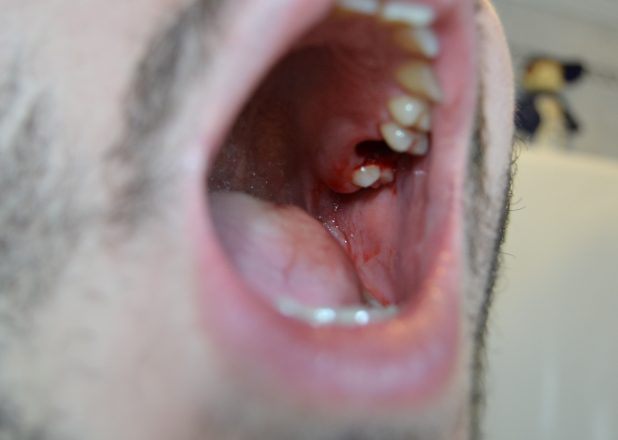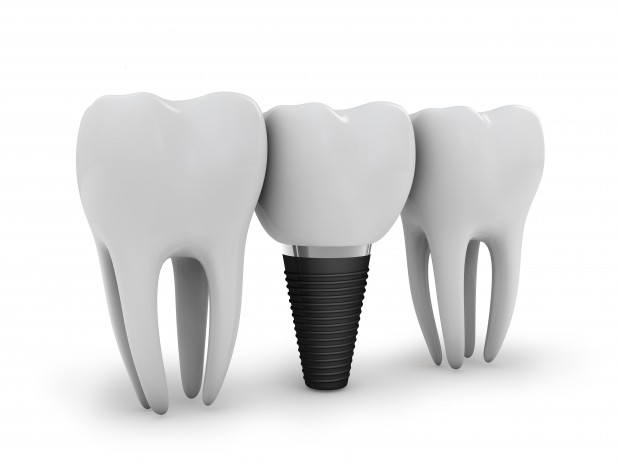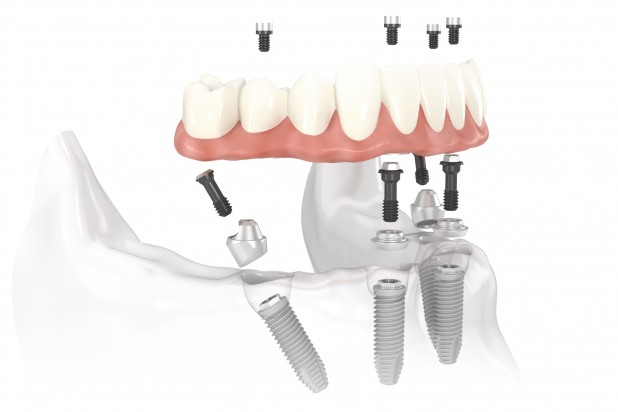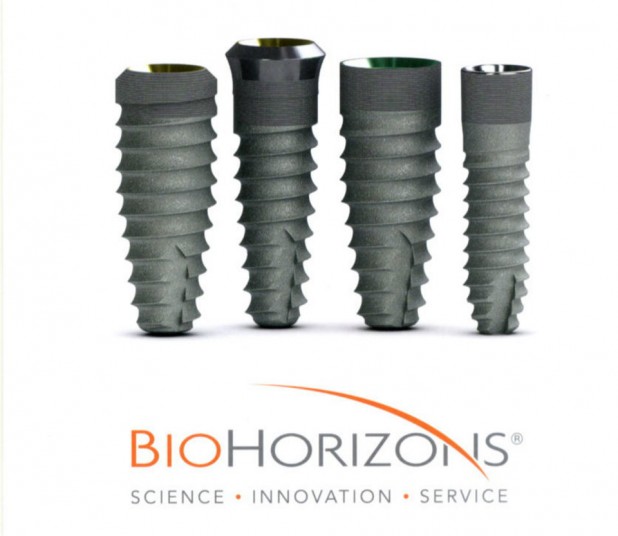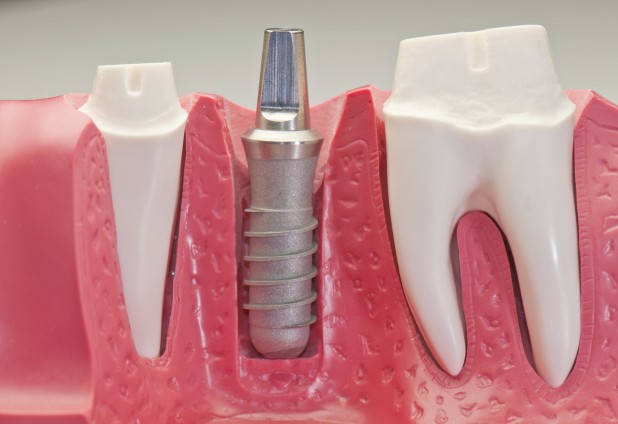Your dental implant questions answered
Each and every single year, millions of us take advantage of cosmetic dentistry procedures to completely overhaul and upgrade their smile.
And while there are all kinds of different procedures out there to help individuals do exactly that, a significant amount of people are opting to take advantage of dental implants do not only boost the overall appearance of their smile but also repair and restore the health of their teeth as well.
One of those rare cosmetic dentistry procedures that aren’t just an aesthetic solution, but instead a structural and health-based one as well, these are considered to be “wonder solutions” for a lot of people looking to boost their smile but also one that millions and millions of dentists absolutely love as well.
If you’re thinking about taking advantage of dental implants but aren’t sure of what they are, what their advantages and disadvantages are over other options, what the procedure is like to have them implanted, and how much they’re going to cost (amongst other questions), hopefully you’ll pay close attention to all of the details included below.
You’ll get answers to each and every one of those questions as well as a bunch more!
As always, if you are seriously interested in having each and every one of your dental implant questions tackled, if you’re going to want to speak with a dentist or dental professional in your area that can give you personalized answers for your specific situation.
In the meantime, though, check out all of the details we have for you below!
What exactly are dental implants?
Dental implants have been around for more than two decades, though they’ve never been quite as effective or as well made as they have been in the last five years.
Essentially a tooth replacement solution, dental implants are rock solid, incredibly durable, and provide for a ridiculously strong and reliable platform for full teeth to be affixed.
A lot of people believe that dental implants are false teeth themselves, and while they are a critical part of the false teeth or replacement teeth solution, the implants themselves are simply threaded metal rods or knobs that are implanted directly into an individual’s jaw.
Then, after a block of time has passed to allow for proper healing and any adjustments have been made, false teeth will be permanently affixed to that base, creating a completely seamless replacement that looks a lot better than any other option on the market today.
The beautiful thing about dental implants is that they offer such a picture-perfect replacement aesthetically, but there’s also a number of other serious benefits and advantages that they bring to the table.
What are the advantages of getting dental implants?
Obviously, we’ve already touched upon the fact that dental implants are far and away the most “lifelike” of all the tooth replacement solutions on the planet right now. They look EXACTLY like your teeth, and it’s going to be absolutely impossible for anyone (and we mean ANYONE) to know that you’ve had dental implants installed unless they are carefully examining your mouth with dental instruments.
And even then it’s not a surefire thing!
That’s how great they are at hiding a tooth or teeth replacement procedure!
At the same time though, here are a couple of other major benefits and significant advantages that dental implants afford you:
You won’t ever have to worry about any speech problems caused by “new teeth” your mouth isn’t used to because of poor fit
You’re going to be a lot more comfortable with dental implants because they fit in the same footprint as your old tooth or teeth, taking up no extra space
They’re going to give you full confidence when you’re chewing and eating because they are basically a 1:1 to through placement
They’ll boost your self-esteem dramatically, as they will immediately increase the aesthetics and appearance of your smile (especially since you can customize your smile with these replacements)
They’ll last for decades – or even longer – with proper care and regular cleaning
They’ll never pop out of your mouth accidentally, and you’ll never have to worry about losing them, because they are permanently affixed just like you are traditional teeth are
And that’s just the tip of the iceberg!
When you combine those advantages with the fact that dental implants also help to protect the teeth that are still in your head and support the overall structure of your jaw, you’re talking about a winning solution here.
Honestly, you’d have to be at least a little bit crazy not to take advantage of legitimate dental implant solutions if you ever need to upgrade your smile, replaced teeth that are on their way out, or fill in the gaps of teeth that have already been removed.
This kind of dental procedure is just head and shoulders above all others.
Are there any disadvantages to dental implants?
There are a couple of drawbacks to moving forward with dental implantation procedures, but none of them deal breakers in any way whatsoever.
Sometimes (not always, but sometimes) a dental implant procedure won’t “seat” the way it’s supposed to, and will require a removal and replacement before a permanent tooth can be affixed. This can increase the amount of time that you are dealing with a “flapper” – or removable tooth that fills in the gap while your post is healing, but other than that it’s not really a big deal.
Also, dental implants can get a little bit pricey – but only really if you’re going with the older and more outdated “full post” solutions. Today, micro dental implants cut the cost of this procedure dramatically, while at the same time ridiculously shortening your recovery period.
If you decide to go with dental implants, make sure that you ask your dental professional if you’re going to be able to take advantage of micro implants.
What exactly does this process of dental implantation involve?
Well, each dental implantation procedure will be different on a case-by-case basis (for obvious reasons), but the general path and process of implantation is relatively similar and straightforward across the board.
First of all, any teeth that need to be removed will be removed, and then those injuries will be allowed to heal for a block of time. Once the healing process is well underway, your jaw will be tested and inspected to make sure that it can support full size dental implants or micro implants, and once that is taken care of you’ll begin the process of actual implementation.
Drills will be brought in, small holes will be made in your jaw, and these implant posts will be “screwed in” to those holes so that it creates a locked in and seamless kind of solution. These posts will now act as the root of your teeth, and then (after a recovery period of a couple of weeks or so) you’ll have a permanent tooth installed on top of that post.
How much should I expect to pay for dental implants?
It’s absolutely impossible to predict with any accuracy exactly how much you’re going to have to pay for dental implants.
This kind of procedure varies widely from region to region, but also from office to office within the same regions.
If you’re looking to have this work done, you’re going to want to make sure that you speak to a number of cosmetic dental professionals in your area (as well as dental surgeons) to get a feel for the “going rate”, and then try to negotiate for the best deal.
As a general rule of thumb though, you can (and probably should) expect to spend anywhere between £1500 and £4000 or so per dental implant.
How do I find a certified professional to handle my dental implantation?
The best way to find a top-of-the-line professional in your area (or anywhere that you’re willing to travel) to perform this kind of dental work on you is to take advantage of all the power and leverage the Internet has to offer, specifically looking for leading cosmetic dentistry experts and dental surgeons that have a track record for successful procedures.
Spend a couple of hours researching different practices, looking at before and after shots, and really getting a feel for the options out there. Then, and only then, will you know whether or not you’ve made the right decision.
Is there anything else I need to know about this dental procedure?
At the end of the day, there are a lot of different options to help you dramatically improve your smile.
Make sure that you’re working with dental professionals you trust, respect, and have a lot of confidence in, and don’t be shy about outlining your expectations ahead of time to make sure that everyone is on the same page.
It also might be a good idea to lock up financing ahead of time (if you’ve needed), as financing through a dental office can get very, very pricey when the interest starts to add up.


